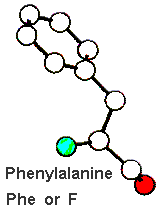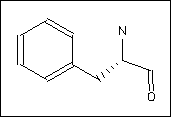

For an updated version of these pages, click here


Substitution preferences:
All protein types:
| Favoured | Tyr ( 3) | Trp ( 1) | ||||||
| Neutral | Ile ( 0) | Met ( 0) | Leu ( 0) | |||||
| Disfavoured | Val (-1) | His (-1) | Thr (-2) | Cys (-2) | Ala (-2) | Ser (-2) | Asn (-3) | Gln (-3) |
| Arg (-3) | Asp (-3) | Lys (-3) | Glu (-3) | Gly (-3) | Pro (-4) |
| Favoured | Tyr ( 2) | Leu ( 1) | Trp ( 1) | Met ( 1) | ||||
| Neutral | Cys ( 0) | Val ( 0) | Ile ( 0) | |||||
| Disfavoured | Ala (-1) | His (-1) | Thr (-1) | Asn (-2) | Pro (-2) | Gln (-2) | Arg (-2) | Ser (-2) |
| Lys (-2) | Glu (-2) | Gly (-3) | Asp (-3) |
| Favoured | Tyr ( 2) | Trp ( 1) | ||||||
| Neutral | Leu ( 0) | Val ( 0) | Ile ( 0) | Met ( 0) | ||||
| Disfavoured | Ala (-1) | Arg (-1) | His (-1) | Thr (-1) | Lys (-2) | Asp (-2) | Glu (-2) | Asn (-2) |
| Gln (-2) | Pro (-2) | Ser (-2) | Gly (-3) | Cys (-5) |
| Favoured | Tyr ( 2) | Cys ( 1) | Leu ( 1) | |||||
| Neutral | Met ( 0) | |||||||
| Disfavoured | Val (-1) | Ile (-1) | Ser (-1) | Thr (-2) | Ala (-2) | Trp (-3) | His (-3) | Arg (-4) |
| Asn (-4) | Pro (-4) | Gln (-4) | Gly (-5) | Lys (-5) | Asp (-6) | Glu (-6) |
Substitutions: As Phenylalanine is an aromatic, hydrophobic, amino acid, it prefers substitution with other amino acids of the same type (see above). It particularly prefers to exchange with Tyrosine, which differs only in that it contains a hydroxyl group in place of the ortho hyddrogen on the benzene ring.
Role in structure: Being hydrophobic, Phenylalanine prefers to be buried in protein hydrophobic cores. The aromatic side chain can also mean that Phenyalanine is involved in stacking interactions with other aromatic side-chains.
Role in function: The Phenylalanine side chain is fairly non-reactive, and is thus rarely directly involved in protein function, though it can play a role in substrate recognition. In particular, hydrophobic amino acids can be involved in binding/recognition of hydrophobic ligands such as lipids. Aromatic residues can also be involved in interactions with non-protein ligands that themselves contain aromatic groups via stacking interactions. Phenylalanine and other aromatic amino acids can be involved in binding to poly-proline containing peptides, for example, in SH3 or WW domains.